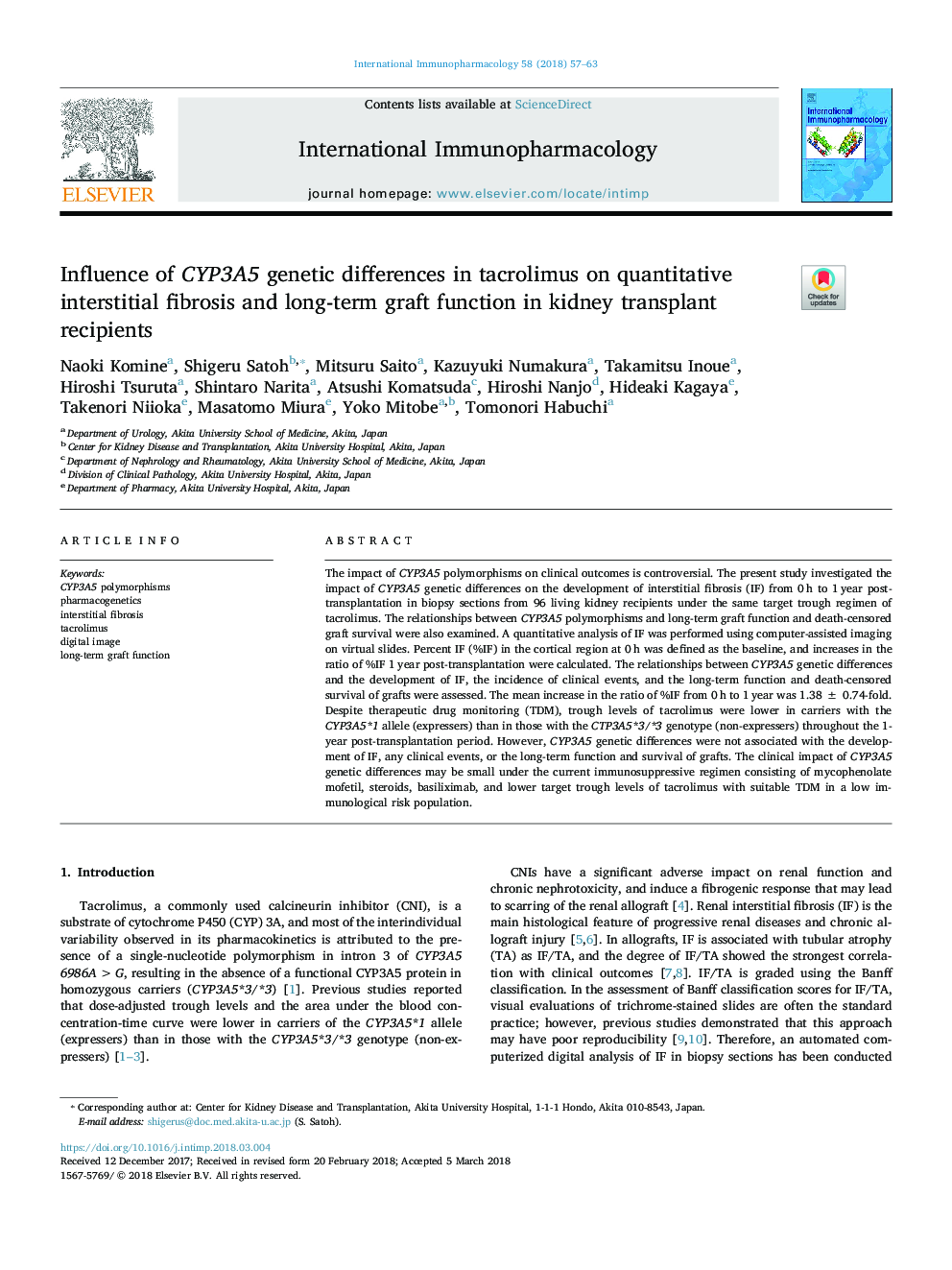| Article ID | Journal | Published Year | Pages | File Type |
|---|---|---|---|---|
| 8531234 | International Immunopharmacology | 2018 | 7 Pages |
Abstract
The impact of CYP3A5 polymorphisms on clinical outcomes is controversial. The present study investigated the impact of CYP3A5 genetic differences on the development of interstitial fibrosis (IF) from 0â¯h to 1â¯year post-transplantation in biopsy sections from 96 living kidney recipients under the same target trough regimen of tacrolimus. The relationships between CYP3A5 polymorphisms and long-term graft function and death-censored graft survival were also examined. A quantitative analysis of IF was performed using computer-assisted imaging on virtual slides. Percent IF (%IF) in the cortical region at 0â¯h was defined as the baseline, and increases in the ratio of %IF 1â¯year post-transplantation were calculated. The relationships between CYP3A5 genetic differences and the development of IF, the incidence of clinical events, and the long-term function and death-censored survival of grafts were assessed. The mean increase in the ratio of %IF from 0â¯h to 1â¯year was 1.38â¯Â±â¯0.74-fold. Despite therapeutic drug monitoring (TDM), trough levels of tacrolimus were lower in carriers with the CYP3A5*1 allele (expressers) than in those with the CTP3A5*3/*3 genotype (non-expressers) throughout the 1-year post-transplantation period. However, CYP3A5 genetic differences were not associated with the development of IF, any clinical events, or the long-term function and survival of grafts. The clinical impact of CYP3A5 genetic differences may be small under the current immunosuppressive regimen consisting of mycophenolate mofetil, steroids, basiliximab, and lower target trough levels of tacrolimus with suitable TDM in a low immunological risk population.
Related Topics
Life Sciences
Immunology and Microbiology
Immunology
Authors
Naoki Komine, Shigeru Satoh, Mitsuru Saito, Kazuyuki Numakura, Takamitsu Inoue, Hiroshi Tsuruta, Shintaro Narita, Atsushi Komatsuda, Hiroshi Nanjo, Hideaki Kagaya, Takenori Niioka, Masatomo Miura, Yoko Mitobe, Tomonori Habuchi,
